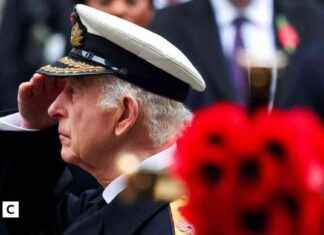Firefighters managed to protect houses from the fire that has been raging for several days in Tenerife, Sunday August 20, while the air quality of this Spanish tourist island located in the Canary archipelago off the west coast of Africa, is now largely affected due to the smoke generated by the blaze.
The fire, which broke out on Tuesday evening in a mountainous region in the northeast of the island, has already devoured 11,600 hectares over a perimeter of 84 kilometers, or about 6% of the island’s area, and forced more than 12,000 people to flee, according to regional authorities. It has become the most important of the fires that the Canary archipelago has known.
Despite forecasts of a difficult night with wind and rising temperatures, things went “much better than expected”, the president of the Canary Islands regional government, Fernando Clavijo, said on Sunday morning: “It is true that the night started very rough with many calls saying that the fire was very close to the houses. But firefighters “worked very intensively” and managed to not lose any homes to the blaze, he added, which is “almost a miracle”.
Montserrat Roman, head of the archipelago’s civil protection department, confirmed Sunday morning that “there [was] no evacuations or lockdowns” overnight. On Sunday, however, local authorities had to evacuate the luxury Parador hotel, located in the heart of Teide National Park, without specifying the number of people evacuated.
A total of 610 people fought the blaze on Sunday and came to the aid of the victims, in addition to the twenty air units that were trying to put out the fire. According to the emergency services, some 1.5 million liters of water were dropped by air units on the flames on Saturday during 930 sorties.
A cloud of smoke 8 kilometers high
As the fire spread down the mountainside on Saturday afternoon towards a town in the north of the island, Candelaria Bencomo Betancor, a farmer in her 70s, watched in anguish. “The fire is close to our farm, we have trucks, vans, chickens, everything… It’s a good business, but if the fire gets to us it will ruin us,” he said. she declared, on the verge of tears. “They have to do something, because the fire is right there,” she added. Spanish Prime Minister Pedro Sanchez is expected on the island on Monday.
So far, the fire has affected eleven municipalities in Tenerife, the largest of the seven Canary Islands with 203,400 hectares. According to the emergency services, the air quality is affected in most of the island “due to the smoke generated by the fire”.
Forest Service Chief Pedro Martinez on Saturday referred to an inferno “behaving like a sixth-generation wildfire,” in reference to its size. According to him, the efforts of the firefighters are hampered by the immense clouds of smoke and the wind.
Visible on satellite images, a large cloud of smoke 8 kilometers high has indeed emerged from the flames. The latter even exceeds the summit of Teide, the highest point in Spain, which overlooks the island with its 3,715 meters of altitude.
In 2022, 300,000 hectares were destroyed by more than 500 fires in Spain, a record in Europe, according to the European Forest Fire Information System. Nearly 76,000 hectares have already burned in 2023 in this country, on the front line in the face of global warming. Since the beginning of the current year, Spain has recorded 340 fires which have ravaged nearly 76,000 hectares.







